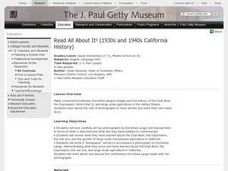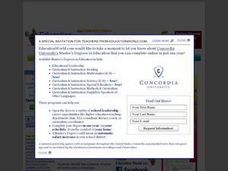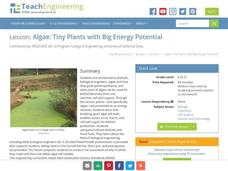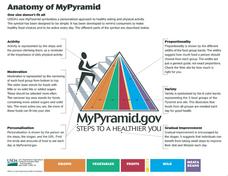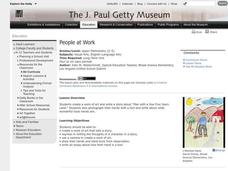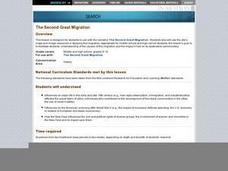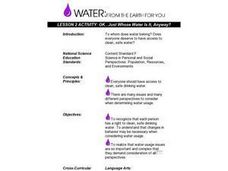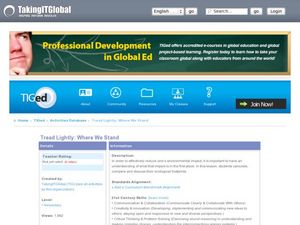Teach Engineering
Extinction Prevention via Engineering
It's time to save endangered species through engineering. The third lesson in a nine-part Life Science unit has young environmentalists study species extinction. An engaging discussion leads to some ideas on how to use engineering design...
Kenan Fellows
The Little Stuff Can Make a Big Difference
Great things come in small packages! What better way to illustrate this point than a week-long look at nanotechnology? Earth science scholars explore water quality issues through lab activities, then research new innovations in nanotech...
National Wildlife Federation
Hot, Hotter, Hottest: Extreme Weather's Impact on Our Resources
How dry is it? It's so dry, the river only runs twice a week! Through an analysis of maps and discussions, pairs learn about droughts across the United States in the ninth of 12 lessons. They then read about, answer questions, analyze...
Curated OER
Eggstra Safe Eggs
Students study about the bacteria that grow in eggs. They examine what farmers do to keep eggs safe such as providing clean environments in the chicken house.
Curated OER
Read All About It! Events and People of the 1930s and 1940s That Shaped California and the Nation.
Learners look carefully at four photographs by Dorothea Lange and discuss them in terms of what is depicted and what she may have wanted to communicate. They review what they learned about the Dust Bowl, the Depression, the war era, and...
Curated OER
Where in the World Is That Volcano?
Identify the Earth's major volcanoes with an earth science lesson. Elementary and middle schoolers locate major volcanoes on a world map. Then, in groups, they research how the volcano affects the region in which it is located.
Curated OER
Picture This - Stars Over Hoke
The classroom becomes a safe and inclusive place for your ELLs as they create documents about their lives. Learners create, read, and present story books based on their own personal experiences. They use digital cameras to take...
Agriculture in the Classroom
Understanding the Columbian Exchange Through Old World and New World Foods
If you're interested in teaching your class about the impact of the Columbian Exchange on contemporary society, this is worth a look. The plan begins with an introduction to the topic, which stems from a cell phone poll...
Teach Engineering
Algae: Tiny Plants with Big Energy Potential
My, what big energy potential you have! Scholars learn about the energy potential of using algae as a biofuel. A PowerPoint presentation first describes the structure of algae and then how researchers use algae as biofuel to produce energy.
Elementary CORE Academy
Food Foldable
There's nothing as satisfying as a crunchy carrot or a juicy apple! Teach your middle and high schoolers about healthy eating habits with a set of nutrition activities. After analyzing the model of the food pyramid, learners apply the...
Curated OER
Don't Trust Your Eyes
Students brainstorm a list of possible actions that they could do to protect the water resources from pollution. They create hypotheses and conclusions by completing experiments and observing different pollutants.
Curated OER
Water Pollution Lesson Plan: Don't Trust Your Eyes
Learners develop a list of actions they could perform that would protect our water resources from pollution. They formulate hypotheses, conduct experiments and draw conclusions about actual pollutants found in our water supply.
Curated OER
The Rancho Period
Third graders describe how the Rancho period of settlement left its mark on the development of the local community.
Curated OER
Future Conditional
Students examine how toxic pollutants affect environmental and human health. They define key terms, watch a video, and answer discussion questions.
Curated OER
People at Work
Students create a work of art and write a story about "Man with a Hoe Five Years Later." students also photograph their hands with a tool and write about what wonderful tools hands are.
Curated OER
U.S. History: The Second Great Migration
Students examine the migration of rural African Americans to northern cities following World War !!. After predicting the effects of cultural and economic factors, they write essays explaining the impact of migration on communities and...
Curated OER
OK...Just Whose Water Is It, Anyway?
Students recognize that each person has a right to clean, safe drinking water. They explain that changes in behavior may be necessary when considering water usage. They role play a water rights courtoom dispute.
Curated OER
The Party: Friend or Enemy of Democracy
Students recognize and appreciate the paradox between an MP being able to vote according to the wishes of their constituents and / or their conscience versus voting according to party line. The class conducts a simulated vote.
Curated OER
Is It Safe To Go In?
Students examine acceptable levels of toxins in swimming areas. Working in groups of four, students dilute a salt or sugar solution to 1 part per 1,000,000 (ppm) solution. Students taste test their diluted liquids and record at which...
Curated OER
A Sense of West Virginia
Students consider their perceptions of the world through their 5 senses while visiting the West Virginia State Museum. In this West Virginia history instructional activity, students discover how knowing about the past helps with their...
Curated OER
Glidden's Patent Application for Barbed Wire
Students discuss the invention of barbed wire and how it affected various groups of peoples in the U.S. after its invention.
Curated OER
Teaching About Trade in the Ancient Mediterranean
Sixth graders examine the trade routes in the Mediterranean of the Ancient world. In groups, they view slides of artifacts while answering questions on a worksheet. After watching a video, they discuss how each object was found and...
Curated OER
SUSTAINABLE AGRISCIENCE
Students, after defining sustainable agriscience, distinguishing between renewable and nonrenewable resources and identify the basic components of a sustainable agriscience system, develop a sustainable agriscience system. They research...
Curated OER
Tread Lightly: Where We Stand
Learners explore the concept of ecological footprints. In this environmental stewardship lesson, students calculate their ecological footprints and consider how to reduce them.




